SIGHTSEEING(高野山観光)
- HOME
- SIGHTSEEING(高野山観光)
千二百年の歴史が息づく山上の聖地
A sacred place atop a mountain steeped in 1,200 years of history
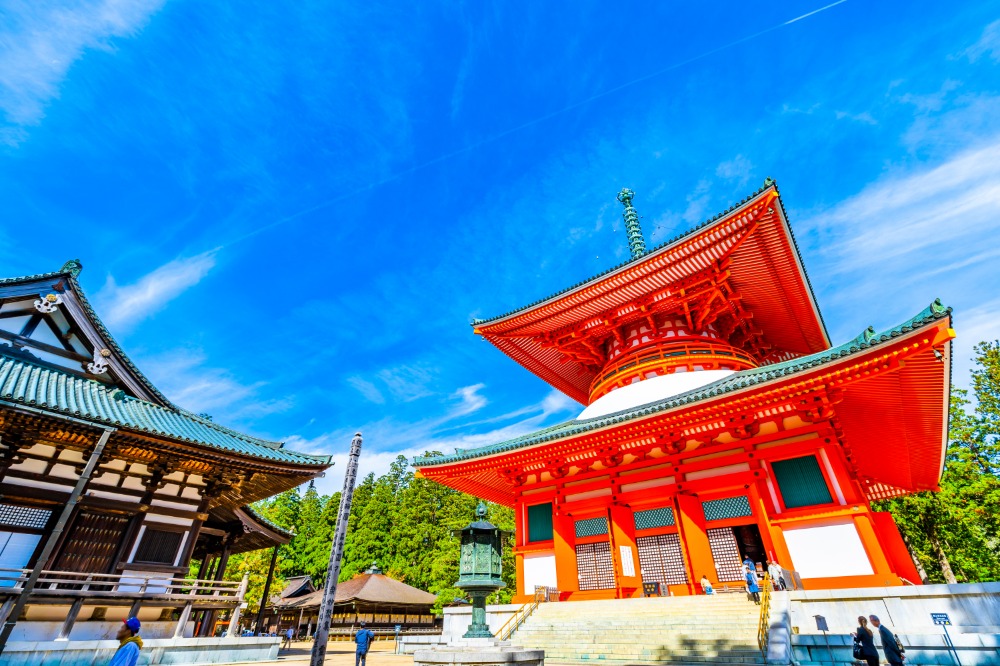
高野山は、和歌山県北部、和歌山県伊都郡高野町にある周囲を1,000m級の山々に囲まれた標高約800mの平坦地にあり、平安時代の弘仁7年に嵯峨天皇から弘法大師空海が下賜され、修禅の道場として開かれた日本仏教の一大聖地です。
明治以前は高野山全体を総本山金剛峯寺といい、「一山境内地」とされていました。境内には根本大塔、金堂など19の建造物が建ち並びます。
現在でも大勢の信者の方や観光客、四国八十八カ所の霊場を巡ったお遍路さんたちをはじめ、世界から大勢の人々が参詣に来られます。
西暦2004年(平成16年)7月には「紀伊山地の霊場と参詣道」として、ユネスコの世界文化遺産に登録され、またミシュラン旅ガイド日本版において、高野山は三つ星を獲得し、優れた観光地として最高の評価を受けております。
当店は、根本大塔から徒歩7分、高野山金堂からは徒歩3分のところにございます。
自然とひとつになった神秘的な場所で身も心もきれいになっていただき、当店で旅の疲れを癒しに”ほっ”と一息をついていただければ幸いです。
Mount Koya, known as one of the most sacred Buddhist sites in Japan, is located on a flat land about 800 meters above sea level, surrounded by 1,000-meter-high mountains in Koya-cho, Ito-gun, Wakayama Prefecture in the northern part of Wakayama Prefecture, and was given to the Buddhist monk Kukai (also known as Kobo Daishi) by Emperor Saga in the year 816 during the Heian period, who later established a Buddhist monastery for the practice of Zen Buddhism.
Until the Meiji period, the entire Mount Koya area was referred to as the Head Temple of Kongobuji, and was known as “Issan Keidaichi” which means that the whole area of Mount Koya was considered a sacred area of the temple. Nineteen structures, including the Konpon Daito Pagoda and Kondo Hall, stand in the precincts of the temple.
Even today, many people from all over the world visit the temple, including many believers, tourists, and those who have made the pilgrimage to 88 Buddhist temples located on the island of Shikoku.
In July 2004, Mount Koya was registered as a UNESCO World Cultural Heritage site as part of the “Sacred Sites and Pilgrimage Routes in the Kii Mountain Range”, and was awarded a 3-star rating in the Japanese-language version of the Michelin Travel Guide as an outstanding sightseeing destination.
We are located 7 minutes on foot from the Konpon Daito Pagoda and 3 minutes on foot from Koyasan Kondo Hall.
We hope that you will visit this mystical place where you become one with nature, cleanse your body and soul, and enjoy a moment of relaxation after a long day of travel.
金剛峯寺 根本大塔
Kongobuji Temple Konpon Daito Pagoda
現在の建物は1937年に再建されたもので、朱塗りの高さ48.5メートルの天守には、泰蔵会大日如来像と4体の金剛界仏像が安置されています。
これらの仏像は、16本の柱と壁に描かれたカラフルな他の神々の図像とともに、曼荼羅を構成しています。
The present structure was rebuilt in 1937, and the vermilion-lacquered, 48.5-meter-high keep houses the Taizokai Dainichi Nyorai statue and the statues of the Four Buddhas of the Kongokai.
These statues of the Buddhas, along with the colorful iconography of other deities depicted on the 16 pillars and walls, make up the mandala.
金堂
Kondo
寺院複合体の本堂として、金堂は重要な仏教儀式に使用されます。
弘仁元年(819年)空海が創建しましたが、度重なる焼失を繰り返しています。
現在の堂は1932年に7度目の再建されたもので、主祭神として薬師如来像を安置している。
As the main hall of the temple complex, Kondo Hall is used to perform important Buddhist ceremonies.
It was established by Kukai in the year 819, but has been repeatedly destroyed by fire.
The present hall was rebuilt for the seventh time in 1932 and enshrines a statue of Yakushi Nyorai as the main deity.
壇上伽藍・中門
Chumon Gate (Middle Gate) of the Danjo Garan
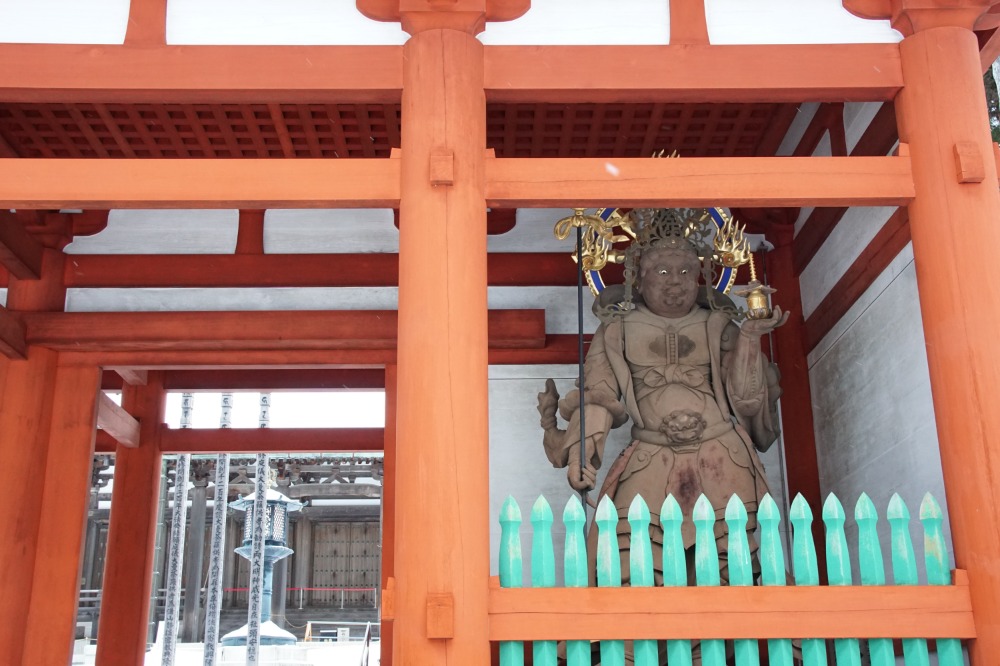
中門の元の建物は、1843年に焼失しました。
元の門の焼失から172年を経た2015年、高野山開基1200年を記念する事業の一環として、現在の門が再建されました。
The original building of the middle gate was destroyed by fire in 1843.
In 2015, 172 years after the original gate was destroyed by fire, the current gate was rebuilt as part of a project to commemorate the 1,200th anniversary of the founding of Mount Koya.
大門
Daimon
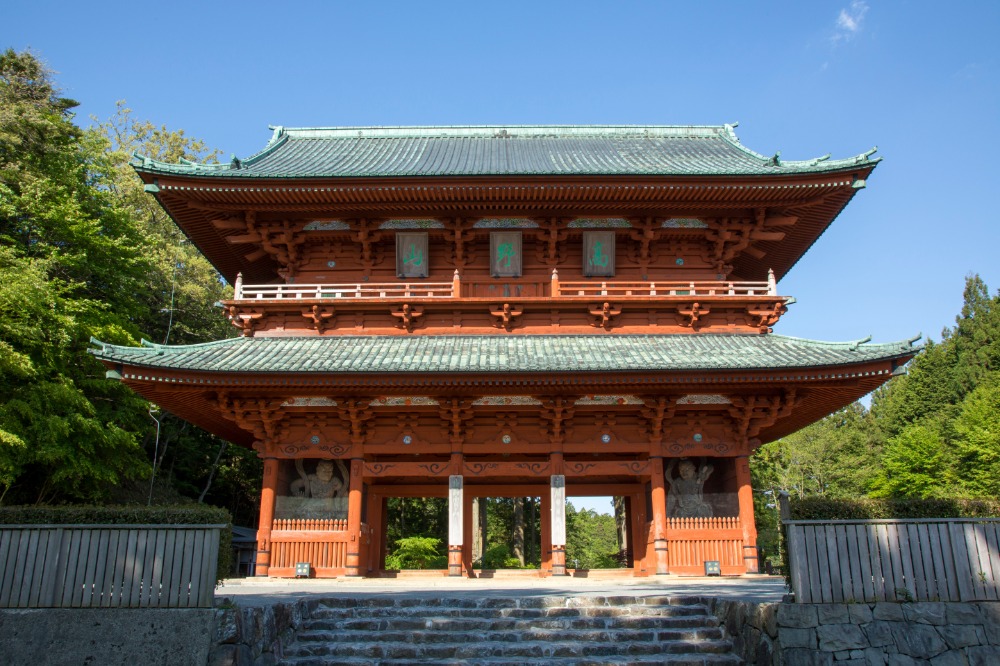
寺院群の荘厳な門である大門の高さは25.1メートルです。
現在の建物は1705年に再建されたもので、参道の両側に2体の守護神像が立っています。
Daimon, the majestic gate of the temple complex, stands 25.1 meters high.
The present structure was rebuilt in 1705, and two statues of guardian deities stand on either side of the approach to the temple.
金剛峯寺
Kongobuji Temple
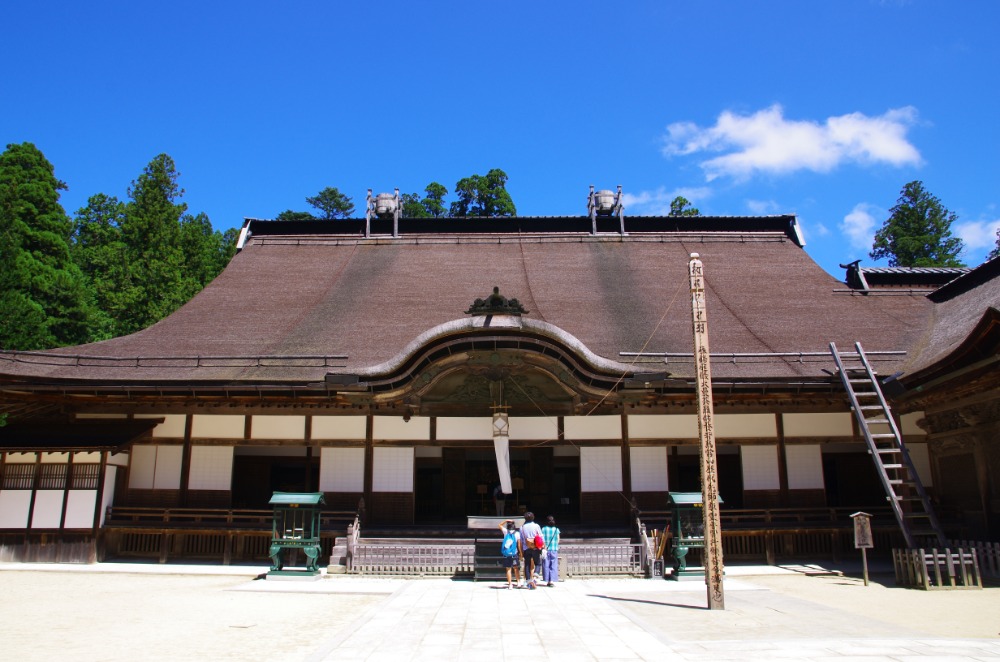
金剛峯寺は、世界に4,000を超える真言宗の寺院の総本山です。
寺院の見所には、有名な芸術家による襖の優雅な絵、壮大なキッチン、豊臣秀次が自殺を余儀なくされた部屋などがあります。
Kongobuji Temple is the head temple of the Shingon sect of Buddhism, which has over 4,000 temples worldwide.
Key attractions at the temple include elegant paintings on sliding doors by famous artists, a grand kitchen, and the room where Toyotomi Hidetsugu was ordered to commit suicide.
霊宝館
Reihokan Museum
国宝、重要文化財、歴史資料など、1200年の歴史を持つ寺院の貴重な財産を収蔵・展示しています。
The museum houses and exhibits a wide range of valuable assets from the temple’s 1,200-year history, including national treasures, important cultural properties, and historical materials.
奥の院参道
Okunoin Path
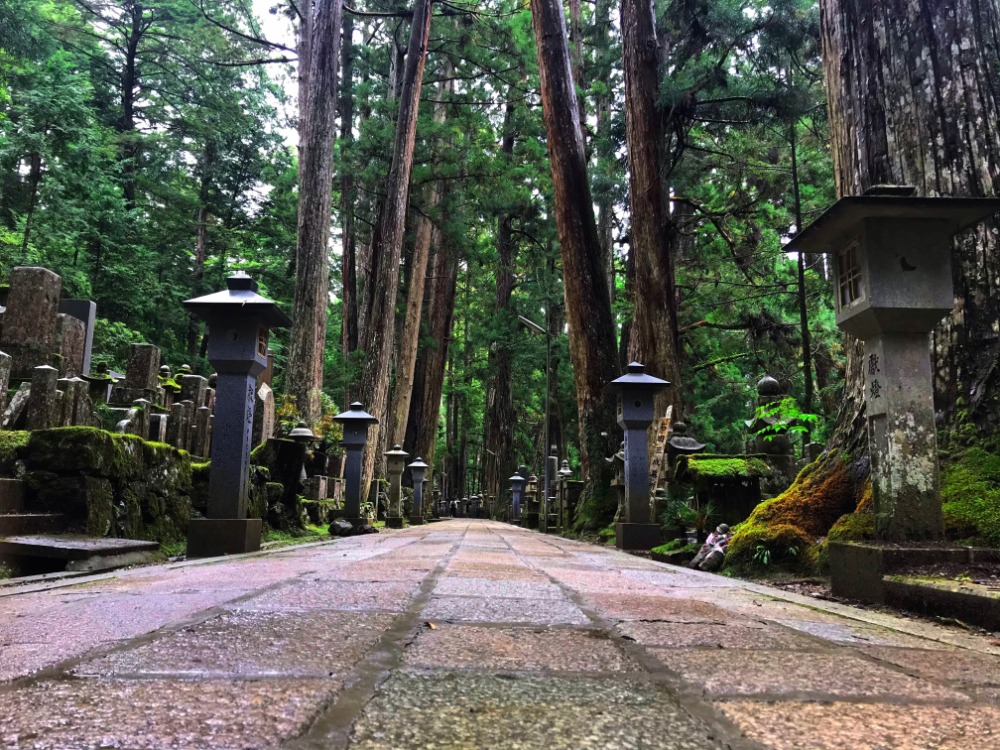
一の橋から弘法大師(空海)霊廟までの約2kmの参道には、樹齢数百年の杉並木がそびえ立っています。
木々の間には、あらゆる階級の人々(庶民から軍の司令官まで)のための200,000以上の墓が建てられており、その存在は、この聖なる山への深い信仰を証明しています。
The 2 km long path from Ichinobashi Bridge to the mausoleum of Kobo Daishi (Kukai) is lined with towering cedar trees that are several hundred years old.
Among the trees, more than 200,000 tombs for all classes of people (from commoners to military commanders) have been erected, and their presence attests to the deep devotion to this holy mountain.
弘法大師 御廟
Mausoleum of Kobo Daishi
空海の死後、弟子たちは透き通った水の流れる多摩川のほとりに霊廟を建てました。
現在も弘法大師を祀るために多くの人が参拝に訪れます。
After Kukai’s death, his disciples built a mausoleum on the banks of the Tama River where crystal clear water flows.
Even today, many people visit the shrine to worship Kobo Daishi.
御廟橋
Gobyobashi Bridge
この橋は訪問者を霊廟に導きます。
橋を渡って「聖域」に入る前に、訪問者は身だしなみを整え、霊廟で今も生きていると信じられ、世界中の人々のために祈りを捧げていると信じられている空海に深く頭を下げるのが習慣です。
This bridge leads visitors to the mausoleum.
Before crossing the bridge and entering the “sacred precincts,” it is customary for visitors to make themselves presentable and bow deeply to Kukai, who is believed to be still alive in the mausoleum and praying for people all over the world.